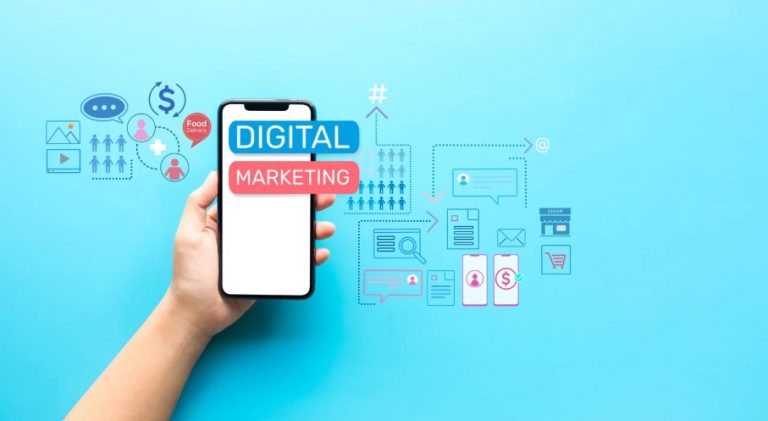Your website needs content to attract, engage, and retain visitors. However, content isn’t limited to text. It also includes images, videos, diagrams, and other visual elements.
Let’s say you create a website with a website builder —and the results are beyond your expectations. Your site is fast, intuitive, and visually appealing, allowing users to find what they need with just a few clicks. But that’s just one piece of the puzzle.
You must also add high-quality content, including relevant visuals, to build trust and engagement.
For example, screenshots and videos can make a complex tutorial easier to digest while providing added value to your readers. The result? Increased credibility, lower bounce rates, and a better user experience.
But what kind of visuals should you use for maximum impact? And how can you adapt them to your brand and target audience? Let’s find out.
How Visuals Influence User Perception in Marketing and Beyond?

Top brands like Condé Nast, Apple, and Nike use stunning visuals on their sites and social media pages. Their images and videos tell a story and evoke emotions, enticing customers to explore further. You can almost see yourself wearing a pair of Nike Air Force 1 sneakers, holding an iPad in your hands, or traveling to an exotic destination.
Not only does visual content drive engagement, but it can also help you build trust and, ultimately, increase sales.
For example, 75% of online shoppers decide whether or not they should buy a product based on the photos in the listing. In one survey, more than 80% of U.S. smartphone users admitted they find product images “very” or “extremely” influential. Around 36% said the same about product videos.
High-quality visuals can enhance the perceived value of a product while increasing brand recognition. They also make your website appear more professional and trustworthy, which can further boost conversions.
Now let’s assume you have a business site or a blog. Photos, infographics, and other visuals can help you convey complex ideas and get your point across more effectively. At the same time, they improve readability, keeping visitors around longer.
Imagine you’re writing a step-by-step tutorial on how to set up an Apple Watch. It’s one thing to provide written instructions and another thing to use a combination of text, images, and videos.
The latter option will make your content more digestible and engaging. Plus, it can enhance your credibility, showing readers that you haven’t just copied and pasted a bunch of instructions from other sources.
Types of Visual Content to Use on Your Website

Strong visuals can make your website pop while enhancing its accessibility and functionality. We’re not talking just about photos and videos, but also visual elements like:
- Infographics
- Animations
- Screenshots
- Slideshows
- Data visualizations
- GIFs and memes
- Call-to-action (CTA) buttons
- Typography
- Illustrations
- Interactive content
- Cartoons and comic strips
- Maps
- Banners
Take cartoons, for example. You can use this type of content to illustrate complex concepts and ideas, such as how to parallel park in five easy steps. Or how Google crawls and indexes web pages.
Sure, you can write these things out, but the copy could end up being dry and hard to follow.
The same goes for slideshows, illustrations, and other eye-catching visuals. Any of these can enhance your copy, leading to more traffic, shares, and engagement. Plus, they deliver greater value than stock photos.
What about CTA buttons? Well, you can use these elements to engage and convert visitors.
A big, bold CTA button is more likely to draw attention than plain text. Users will see it more easily and click on it to buy your products, join your email list, or book an appointment.
How to Build Trust Through Visual Content?

Visual-rich media can be a good choice for websites in most industries, from SaaS to wellness and healthcare. Its uses will depend on your marketing goals and target audience.
For starters, follow these practices to build trust through visual content.
1. Make Your Own Visuals
Create your visuals in-house rather than use stock photography and videos. The latter are generic and impersonal, making it difficult to establish your brand.
Look into visual editors like Cartoonize, Canva, or Pixteller. With these online tools, you can create original images that reflect your brand’s personality.
For instance, Cartoonize will turn your photos into sketches, cartoons, or artwork. It also allows you to personalize stock photos by adding text, overlays, and special effects. Plus, it lets you crop and resize images, remove the background, and add filters.
By making your own visuals, you’ll convey a sense of authenticity and increase brand recall. On top of that, customers will remember your message more easily.
2. Leverage Color Psychology
Different colors evoke different emotions, shaping consumers’ perceptions of your brand and products. With that in mind, leverage color psychology when choosing your website’s visuals.
For example, the color red is a good choice for banners and CTA buttons, as it triggers a sense of urgency and excitement. You can also use it to create images featuring sales and special offers.
Blue, on the other hand, evokes trust and professionalism. It’s suitable as a background color for hero images, blog photos, and data visualizations, such as charts and diagrams. But if you sell women-focused products, you might be better off using the color pink, which is associated with romance and femininity.
Start by creating a brand color palette. Then use those colors in your photos, videos, illustrations, and other visuals. Meanwhile, conduct A/B tests to see which colors resonate best with your audience.
3. Share Behind-the-Scenes Shots
Many consumers are tired of faceless brands that hide behind chatbots, generic photos, and online ads. They crave human interaction and want to know the people they buy from.
However, this doesn’t mean you should put yourself in the spotlight. Instead, share behind-the-scenes shots to show off your work environment, processes, and daily activities. Go one step further and introduce your team members and their contribution to the brand.
Say you run an online store selling homemade snacks. Some examples of behind-the-scenes content could be:
- Videos of your staff members trying new recipes
- Virtual tours of your workspace or kitchen
- Close-ups of ingredients
- Grocery shopping videos
- Candid photos of your team packing snack boxes
For instance, you could make a video showing your utensils, the shelves stocked with ingredients, or moments when things don’t go as planned.
This type of content can help humanize your brand, making it easier to build trust. It also allows you to connect with your audience on a more personal level to gain their loyalty and support.
4. Use Visuals to Establish Your Credibility

Visual content also includes digital badges, certifications, star ratings, and other trust elements. These can boost brand credibility and help establish yourself as an industry expert.
An example is Gusto, a leading online software provider. On its homepage, you can see dozens of images showcasing the awards and ratings it received from top companies like G2, PCMAG, Forbes, and TechRepublic.
Other brands display the logos of their most famous clients or video reviews from customers. These visual elements serve as social proof, instilling trust and transparency.
5. Experiment with Virtual Reality
Virtual reality (VR) can bring your products to life, giving customers confidence in your brand. This technology also streamlines the shopping experience, helping buyers with their purchase decisions.
For example, if you’re a real estate agent, consider offering virtual tours of the properties in your portfolio. This would allow potential clients to envision themselves living in those spaces and choose a home that’s right for them.
Food bloggers, on the other hand, can host VR cooking classes, virtual food tastings, or step-by-step cooking tutorials powered by this technology.
The result? An immersive experience where customers can interact with your content, ask questions in real time, and learn by doing.
As a final word, experiment with different types of visual content. What works for one business may not work for another, so you need to continuously test and refine your approach. For inspiration, study your favorite brands and see what kind of content your audience engages with on social media and other platforms.




